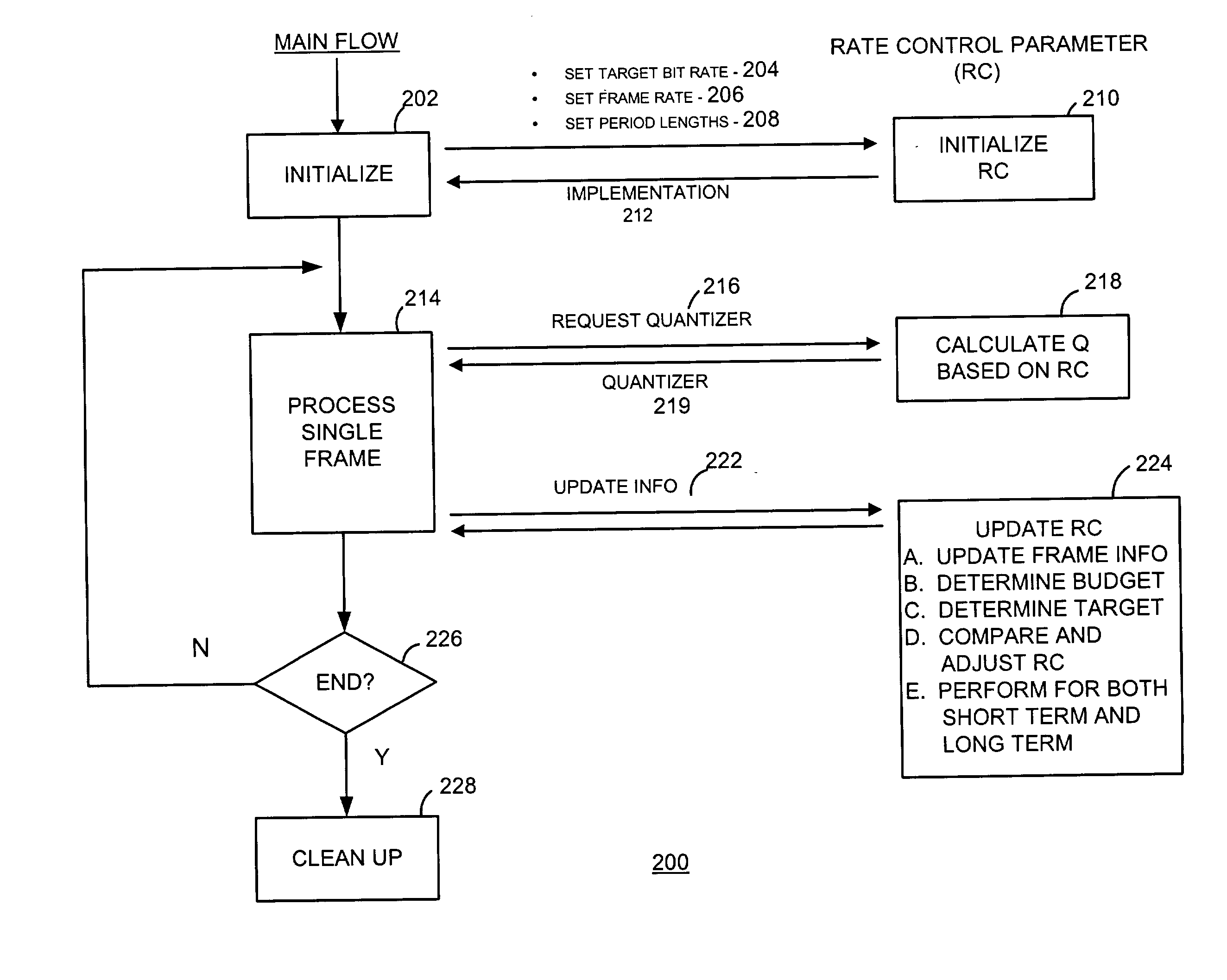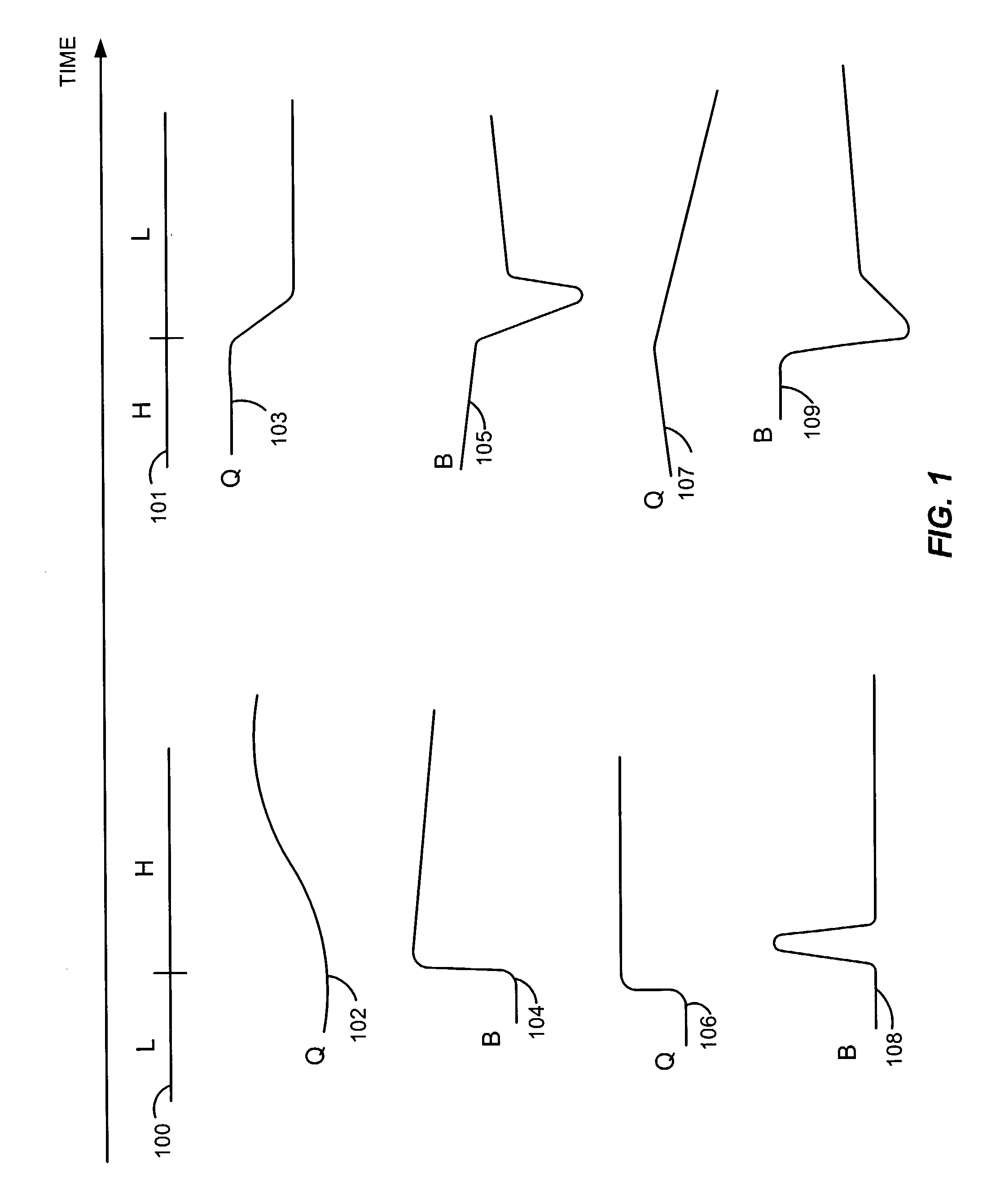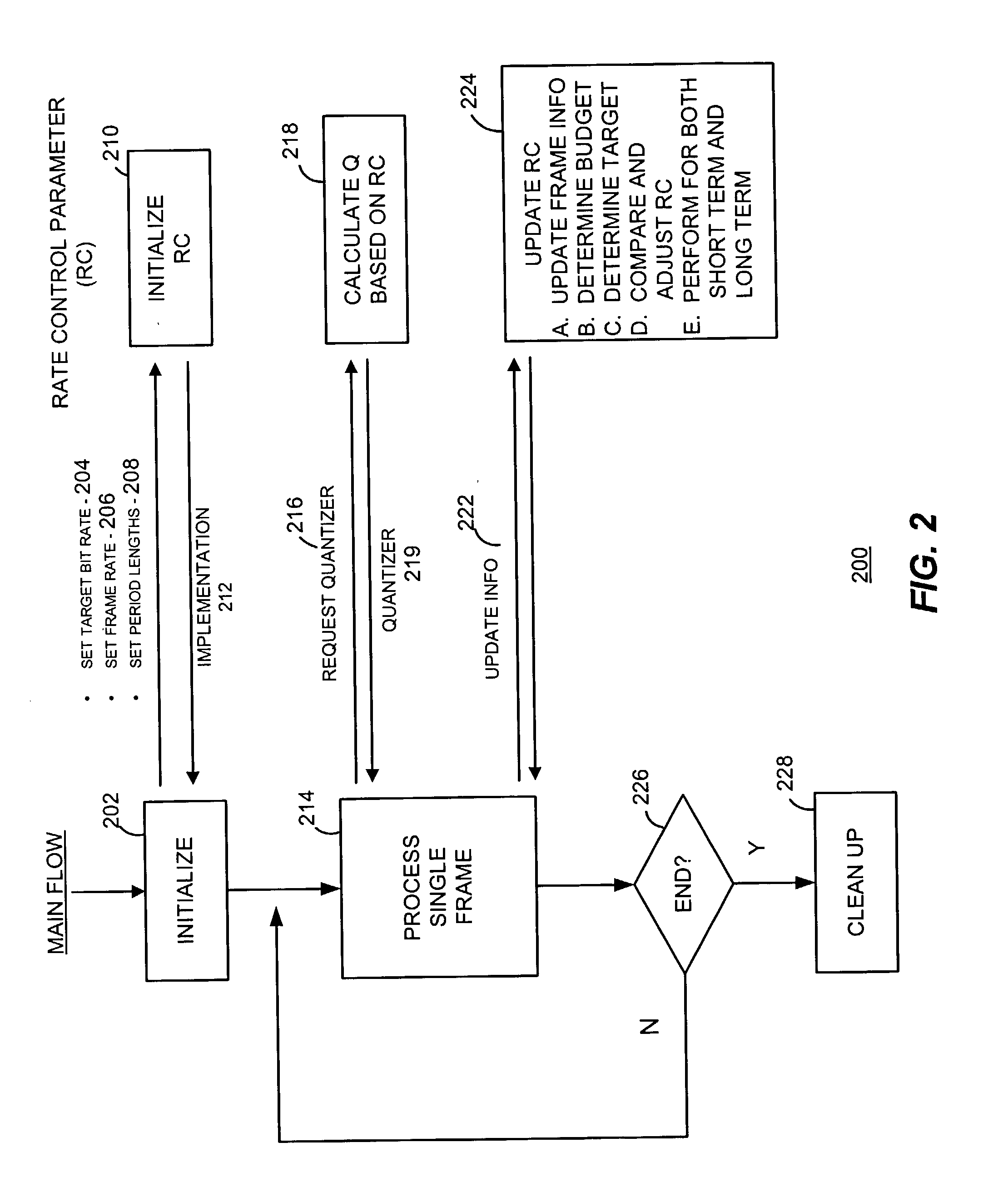Dynamic bit rate control process
a bit rate control and bit rate control technology, applied in the field of dynamic bit rate control process, can solve the problems of signal data onto quantized values that produces some loss in accuracy, and generates signal distortion
- Summary
- Abstract
- Description
- Claims
- Application Information
AI Technical Summary
Benefits of technology
Problems solved by technology
Method used
Image
Examples
Embodiment Construction
[0023] Various embodiments of the present invention are described hereinafter with reference to the figures. It should be noted that the figures are only intended to facilitate the description of specific embodiments of the invention. They are not intended as an exhaustive description of the invention or as a limitation on the scope of the invention. In addition, an aspect described in conjunction with a particular embodiment of the present invention is not necessarily limited to that embodiment and can be practiced in conjunction with any other embodiments of the invention.
[0024] FIG. 1 is a timing diagram illustrating bit rate control schemes in accordance with the present invention. In a typical motion picture, scene activity density may vary dramatically, sometimes over a short time period. In FIG. 1, a time line 100 depicts a transition period during which the scene activity density varies from a low (L) level to a high (H) level, and a time line 101 depicts another transition ...
PUM
 Login to View More
Login to View More Abstract
Description
Claims
Application Information
 Login to View More
Login to View More - R&D
- Intellectual Property
- Life Sciences
- Materials
- Tech Scout
- Unparalleled Data Quality
- Higher Quality Content
- 60% Fewer Hallucinations
Browse by: Latest US Patents, China's latest patents, Technical Efficacy Thesaurus, Application Domain, Technology Topic, Popular Technical Reports.
© 2025 PatSnap. All rights reserved.Legal|Privacy policy|Modern Slavery Act Transparency Statement|Sitemap|About US| Contact US: help@patsnap.com



